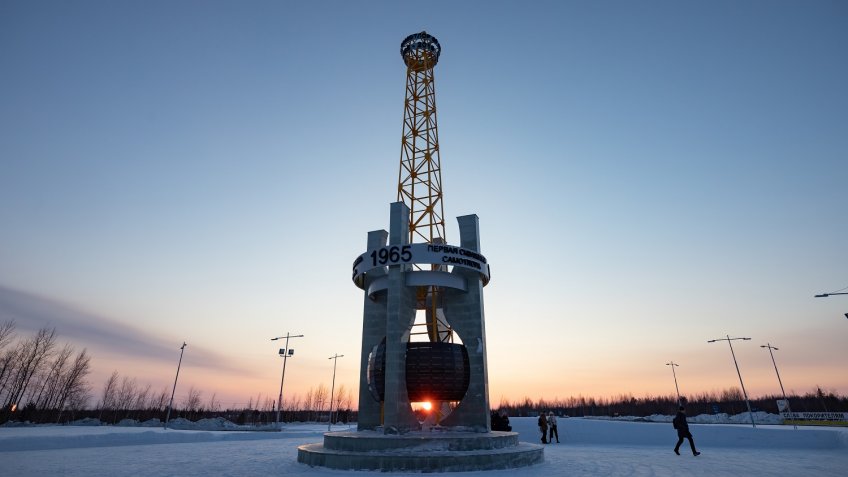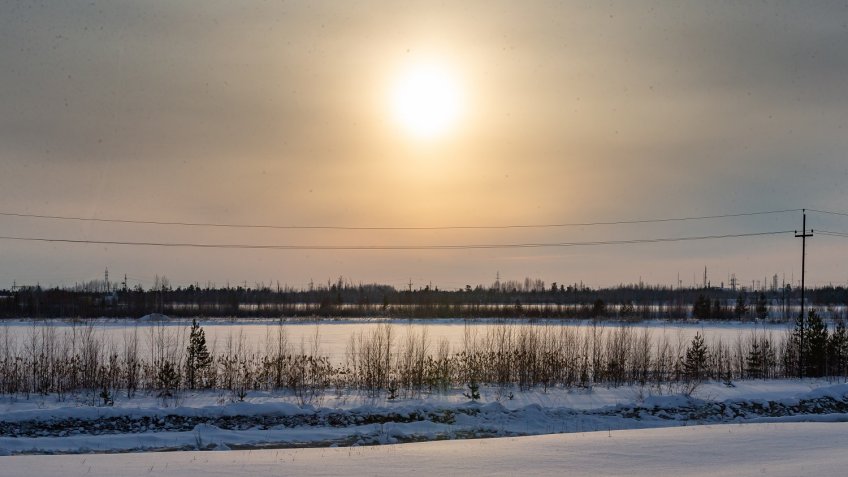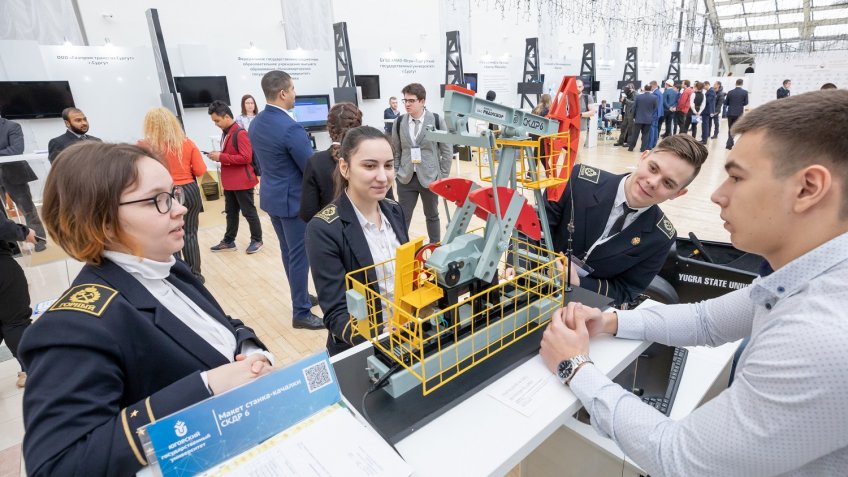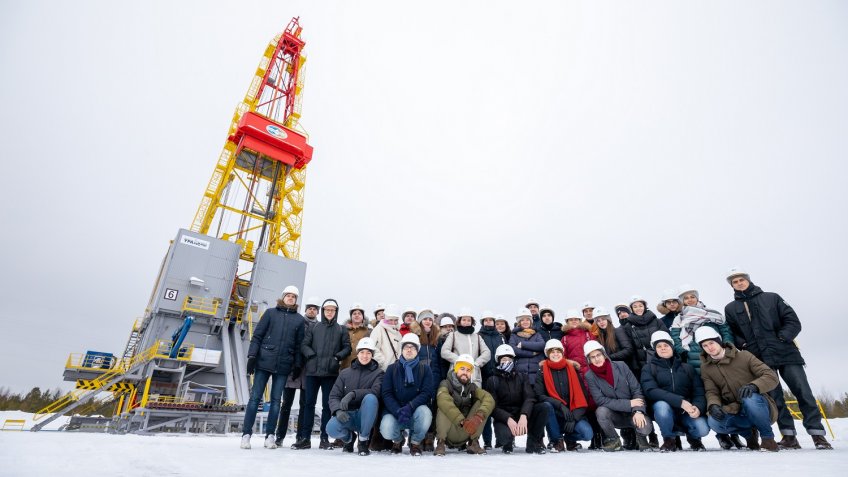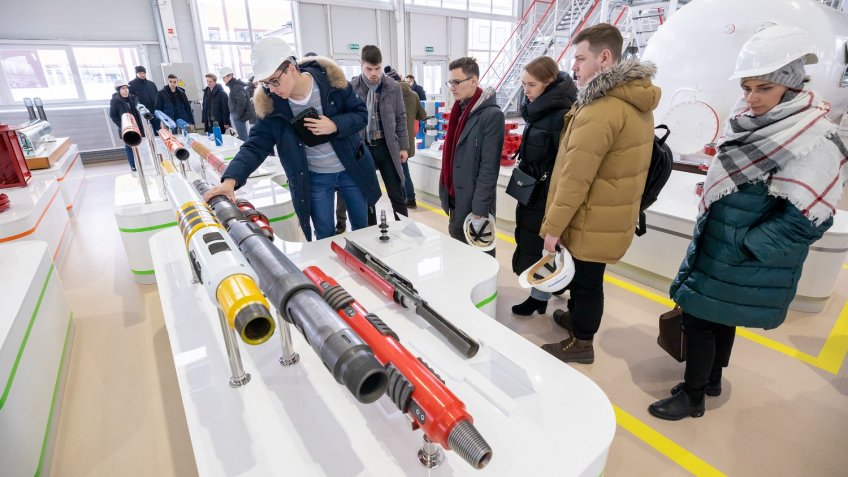
The Khanty-Mansiysk Autonomous District is the main oil-producing region of Russia. In 2019, it provided 5% of world oil production, i.e., more than 236 million tons of black gold was extracted from its bowels. The total production of natural and associated petroleum gas amounted to 36.6 billion cubic meters. It is no surprise that this particular subject of the Russian Federation was chosen as the venue for the third International Youth Scientific and Practical Conference named “The Oil Capital”. Its main site was set in Nizhnevartovsk.
As part of the forum, the EnerGenius Winter School took place. Its participants, such as high school and university students, postgraduate students and young scientists from St. Petersburg and Khanty-Mansi Autonomous District, could listen to lectures by leading experts and take internships at oil producing enterprises. They could also learn about the history of the development of the region, which today makes a tremendous contribution to the economic development of the country.
It all started in the 1960s, when the first geologists went out in search for Siberian oil. In Nizhnevartovsk, one can still see the barracks where the first oil workers lived; despite the Spartan living conditions and harsh climate, they managed to discover the Samotlor oil field in 1965. Today it is the largest in Russia and the seventh largest reserve in the world.
From the Khanty language Samotlor is translated as “dead lake”. This name is due to the many kilometers of impassable swamps extending around it. The winter temperature there drops down to minus 50 degrees, while in summer severe frosts are replaced by humid heat and hordes of mosquitoes. Employees of the local history museum reported that by the discoverers’ descriptions, “iron was falling apart due to the bitter cold, but people managed to withstand it.”
It’s hard to believe now, but when the lead of the oil exploration expedition Vladimir Abazarov and his team began exploratory drilling, people in Moscow were rather skeptical about the prospects. They believed that the project “will fall through,” and oil will be too expensive. However, only a few years later, it became clear that geologists found a real “pot of gold”.
In the early 1980s, which accounted for the peak of production, about 150 million tons were raised there annually. Then the oil formations began to get watered and production dropped down sharply. In 1996, it fell to 21.5 million tons, and kept a downward trend in the next years.
Everything changed a few years ago. Additional exploration of the marginal zones helped that, along with the use of new technologies contributing to the intensification of oil production. It is, first of all, about the drilling of complex wells with a large deviation from the vertical and the use of innovative polymers for the technology of hydraulic fracturing.
Amendments to the Tax Code adopted by the State Duma in 2017 also affected the trend change creating a favorable tax regime, which consists in the annual reduction of mineral extraction tax on oil extracted at Samotlor over the following 10 years.
As a result, prerequisites appeared for a significant progress in the life of the richest natural stockpot in Russia a least until the very end of the 21st century. And this is quite real, because its proven recoverable oil reserves amount to 2.7 billion tons, and geological reserves to 7.1 billion.
According to the results of the fourth quarter of 2019, Rosneft increased production at the field by 0.4%, to 0.37 million barrels per day. This is approximately 18.5 million tons per year. According to experts, this figure should go up in the future
The Autonomous District continues to develop technological competencies that would allow our region to become a testing ground for full-scale digital core modeling and tertiary methods to increase oil recovery. For Ugra, the development of these segments is one of the priority areas for the development of the oil industry and the basis for the formation of a leading scientific and technological reserve for the oil and gas complex of the whole country.
Governor of the Khanty-Mansi Autonomous District-Ugra Natalia Komarova
Natalya Komarova urged schoolchildren and young scientists to actively engage in applied scientific research necessary to modernize the oil and gas industry and increase its effectiveness, including minimizing environmental impact. After all, the mineral and raw materials complex is doomed to further growth over the next few decades, no matter how hard the environmental defenders try to prove the opposite.
Mining University postgraduate students Dmitry Sidorov and Andrey Kunshin, who participated in the work of EnerGenius, presented their project there to introduce virtual reality technologies into the training of drillers. We are talking about a training simulator, the memory of which contains a database of various contingencies that really happened at oil facilities.
Each deposit is unique. For example, the productive horizon is at a certain depth, and the developing layer is slightly higher. An emergency begins: a water occurrence. The student must learn how to fix this problem on the simulator, so that when they meet it in reality, they won’t be confused. After all, they had dealt with it in virtual reality dozens of times; moreover, countering a variety of characteristics. It seems to me that in the future, it will even be possible to equate real physical experience with cyber physical. Of course, they are not completely comparable, but a reasonable proportion can be found
Postgraduate student of St. Petersburg Mining University Andrei Kunshin
IT solutions were among the main topics disputed at the school. For example, engineers of Varioganneftegaz presented their colleagues a mobile application: OGPD Operator’s Handbook. The service provides quick access to the necessary information for oil workers at the field.
The fact that such solutions are really in demand, the young scientists could more than once witness at the real industrial sites of Ugra. In addition to the historical Samotlor, they visited Surgutneftegaz and Slavneft facilities, where experts confirmed that the industry will keep growing, and digitalization of production processes is vital for its successful development.
If we speak about all the interactive facilities that we visited during the school, I was most impressed with Surgutneftegaz. In particular, their huge technology park for advanced training. There is a fairly wide range of equipment, various simulators for training in various fields of knowledge, for example, in drilling or electric power industry. There you can physically see everything, understand how everything works. The company is on the top in this sense.
Postgraduate student of St. Petersburg Mining University Anton Bondarenko
The Polytechnic Educational Center (PTEC), which impressed school participants, occupies 42 hectares of land. The main building has 22 classrooms, six simulators, ten computer labs and 16 laboratories. On the territory, there is a real drilling rig, lifting units and other oil equipment. All this is used to train new workers and improve the skills of those who work for a long time. The employees of the company themselves act as teachers; this approach allows us to make the process of increasing competencies as close to production realities as possible.
It should be noted that the organizers of the Winter School of EnerGenius were the Russian National Committee of the World Petroleum Council, the Government of the Khanty-Mansi Autonomous District, the administration of St. Petersburg, and Mining University, as well as the International Competence Centre for Mining Engineering Education under the auspices of UNESCO, whose specialized area in the oil and gas sector is Ugra.
